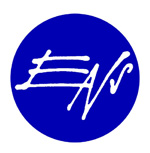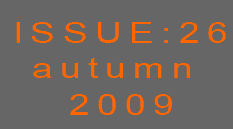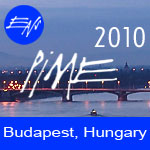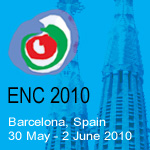
High Scientific Council - Position Paper

The medical isotope crisis
Introduction
Last year saw a major worldwide crisis in the availability of medical radioisotopes. More specifically in the production of Mo-99/Tc-99m generators for diagnostic nuclear medicine. We will shortly analyse the causes of the shortage and point to necessary long-term measures to avoid future crisis.
When highly enriched U targets are irradiated in a high-flux reactor, a number of fission products are created, among which Mo-99 with a half-life of 66h. Radioactive decay of Mo-99 produces Tc-99m, a pure gamma emitter (140 keV) with a half-life of 6h. By separating Mo-99 out of the U targets, Mo-99/Tc-99m generators ('cows') are produced and shipped to hospitals worldwide. Some other production schemes exist, but their yield is much lower and the activity produced is too small to be of importance on the world market.
Tc-99m is used in about 80% of all diagnostic nuclear imaging procedures, corresponding to about 30 million examinations yearly worldwide, among which several million in Europe alones1.
Production and Separation Facilities
Currently, the irradiation of the U targets allowing for the production of more than 90% of the available Mo-99 is performed in only 5 (MTR) reactors: NRU reactor in Chalk River, Canada; HFR in Petten, The Netherlands; BR2 in Mol, Belgium; OSIRIS in Saclay, France and SAFARI in Pelindaba, South Africa. All are older than 40 years.
The separation of the Mo-99 out of those irradiated targets is performed at 4 centres: AECL separates the Mo-99 in Chalk River and MDS-Nordion purifies it in Kanata, Canada; Covidien in Petten, The Netherlands; IRE in Fleurus, Belgium and NECSA-NTP in Pelindaba, South Africa.
The Mo99/Tc-99m generators are then manufactured and sold by a number of companies, among which the most important ones are now Covidien (formerly
Mallinckrodt / TYCO Healthcare), Lantheus Medical Imaging (formerly DuPont / Bristol-Myers Squibb), GE Healthcare (formerly sold by Amersham) and IBA-Molecular (formerly CISbio International).
The NRU reactor produces about 40% of the required Mo-99. The three European reactors together produce 40 - 45% and the remaining amount is produced in South Africa and smaller actors. Given the operating schedule of the European MTR reactors involved, a coordinated European production calendar is fixed, ensuring a continuous production, provided of course that there are no incidents with the reactors or the processing facilities.
Other small irradiation/separation/production sites exist, but their market is purely local.
Triggers of the Crisis
In August 2008, the HFR reactor in Petten was supposed to have been operational. Maintenance stops were underway as scheduled at BR2, OSIRIS and NRU. However, due to the discovery of corrosion and possibly small leaks in the primary circuit of the reactor, the HFR was not restarted. Independently, an incident occurred at IRE, during which about 37 GBq (1 Ci) of I-131 was released through the ventilation stack, without any adverse health effect for the workers and the population.
Suddenly, only one major irradiation facility (SAFARI; South Africa) remained available and one of the two European separation facilities was out, the other (Covidien) being stopped because of lack of irradiated targets.
After a few days, production resumed in Canada, but mainly for the North American market. Thanks to the efforts made by OSIRIS and BR2 for the irradiation of a maximum of U targets on the one hand, and the agreement by IRE for allowing Covidien to process IRE targets on the other hand, Covidien could resume operation at the beginning of October. After having received the authorization of the authorities, IRE could resume operation in mid-November. The HFR resumed operation in February 2009.
Due to this crisis, hundreds of thousands patients were denied diagnostic imaging tests based on Tc-99m. Some of the tests could be performed by alternative techniques such as PET, but at a much higher price. Others, by using less adapted radioisotopes. Most, however, had to be postponed or cancelled.
Status of Production Facilities in Operation
The crisis points to the alarming lack of production facilities for reactor produced medical isotopes.
-
In Canada, the NRU reactor started operating in 1957. The NRU reactor was scheduled to close down in 2005. AECL therefore designed and constructed two reactors dedicated to isotope production, Maple 1 and 2. Maple 1 was supposed to be operational by 1999. Due to major design errors, the operation of the reactors would have been unsafe. After several years of tests and design changes, AECL decided to stop the Maple project in 2008. Due to this, the operating licence of the NRU may be prolonged after 2011, even though it is now one of the oldest reactors still in operation worldwide. It is expected that the mandatory safety upgrades will require the NRU to be shut down for at least 1 year in the near future. Mid-February 2009, the NRU reactor was shut down once again for a few days due to a problem with the mechanism that extracts isotope-containing rods from the reactor. . The reactor was shut down mid-May because of a heavy water leak inducing Tritium releases through the ventilation system. The inspection programme of the reactor vessel has been performed, the analysis of the inspection data is in progress and the repair programme is under preparation. At this time, AECL expects the NRU to be restarted during the first quarter of 2010.
-
In France, OSIRIS will be shut down when the Jules Horowitz reactor (JHR) becomes operational. This is expected to be the case in 2014-2015. There should, therefore, be no discontinuity in irradiation facilities in France provided that the price asked for irradiating U targets in the JHR is commercially acceptable. In case of a long-lasting crisis, ORPHEE could also be used to produce radioisotopes for nuclear medicine. In 2009-2010, OSIRIS will undergo major maintenance work to allow its operation until 2015. An extended shutdown period of 5 months is foreseen in 2010.
-
In Belgium, BR2 is scheduled to operate at least until 2016 and there is no technical reason to stop its operation before 2020 at the earliest, provided that adequate fuel remains available and that the licensing authorities agree. At that time another multipurpose irradiation facility, MYRRHA, a multifunctional accelerator driven subcritical system (ADS), or ADONIS, a dedicated ADS, should be able to ensure continuous Mo-99 production.
-
In The Netherlands, after having been stopped for about six months due to corrosion problems, the HFR has been authorised by the Dutch regulatory authority to remain operational for an interim year until 1 March 2010 to allow for preparation of repairs. These operations are expected to last several months and scheduled to begin no later than in February 2010. In the meantime NRG is in the process of designing PALLAS as the replacement for the HFR reactor. The official target date for it is 2016, probable date at which the HFR will be stopped, but well informed sources doubt that this deadline is realistic as no formal decision concerning the construction or funding has been taken yet.
New projects
Several projects in the world could increase the availability of Mo-99 on the market at short-, mid- and long-term:
-
The US is looking at the possibility to irradiate NRU targets in existing reactors such as MURR (University of Missouri; US) or HFIR (Oak Ridge; US), and to reprocess them in Chalk River (Canada) for Mo-99 recovery. The MURR research reactor, which was built in the early sixties, could produce about 50% of the US TC-99m needs. To commercially produce the isotope, MU would need to build and license a $40 million facility. Transport issues are involved.
-
Other US initiatives exist on paper. Covidien announced an agreement with Babcock & Wilcox to study the development of an Aqueous Homogenous Reactor, or "solution reactor", which would be fuelled by low-enriched uranium (LEU) in place of highly enriched uranium (HEU) and dedicated to isotope production. It is not realistic to expect such a reactor to be built and be operational before 2020.
-
Several projects have also been initiated by the IAEA to identify new potential Mo-99 producers in the supply chain. Two coalitions have been established: the EARRC (EURASIA Research Reactor Coalition) and the EERRI (East European Research Reactor Initiative).
-
The EARRC Isotopes Coalition is a new consortium of existing research reactors, isotope production facilities and market specialists that can make an important contribution to the shortage of Mo-99; The coalition will use the activation route 98Mo(n,γ)99Mo with natural and/or enriched 98Mo as target material.
-
The EERRI initiative was established in 2008 in line with IAEA efforts to improve research reactors utilisation through coalitions and networks. The production of Mo-99 in existing facilities is under consideration.
-
Other projects worldwide (Idaho State University, TRIUMF, ...) study the feasibility to produce Mo-99 using accelerators. The Canadian project of the TRIUMF group involves photofission of U-238 with a high power accelerator that could produce some 5% of the World demand.
Only a few of these projects will obviously been realized and they are not expected to generate an overcapacity of Mo-99.
Cost Analyis of Mo-99/Tc-99m Generators
A characteristic of the isotope production scheme is that none of the multipurpose reactors would be commercially viable thanks to isotope production alone. Up to now the only dedicated reactors built for a private company (the Maple reactors) turned out to have major technical design errors and, therefore, ended up to be financially disastrous. All reactors used today for isotope production are research reactors that have been paid for by public funds. A short analysis of the production and sales cost of Mo-99/Tc-99m generators is, therefore, relevant.
The price of nuclear medicine procedures obviously depends on the procedure, on the particular social security system and on other local factors such as transport costs. As an illustration, the Belgian price structure of a standard thyroid scan is given. It is followed with some data obtained by means of a small survey among nuclear medicine centres worldwide. The data mainly concern the price of Mo-99/Tc-99m generators.
Data on the cost of a thyroid scan with pertechnetate performed on an adult outpatient in a Belgian university hospital (the numbers given are rounded to the nearest integer):
In this total price, the price of the isotope, as determined by the competent Belgian administration, amounts to 19 EUR or 13%. The price of the associated medical acts is 111 EUR or 87% and covers both instrumentation, personnel and overheads.
According to a 2008 US study (National research Council – prepublication data, Medical Isotope Production Without Highly Enriched Uranium)2, the cost for producing Mo-99 would range from about $125 to $325/Ci calibrated at 6 days3, or 2.6 to 6.7 EUR/GBq (at $1 = 0.78 EUR). The selling price of a Mo-99 Ci would be worth about $470 or 10 EUR/GBq.
In a small survey, data (8 in total) were received from Europe, North and South America, Oceania. Due to the small number of data, the statistical validity of the data is poor. Nevertheless, some conclusions can be drawn.
Averages have been calculated on the received data. Because conversion errors cannot be excluded, the averages have also been calculated on the data without the lowest and highest values.
Mo-99 generator activity: range 30 to 666 GBq.
Mo-99 generator price:
-
Range = 3.7 to 24 EUR/GBq; average = 12 EUR/GBq.
Without extremes:
range = 6.7 to 18.2 EUR/GBq; average = 11.5 EUR/GBq.
Part of the large variations can certainly be attributed to large differences in generator activity as well as to differences in transport costs. Other differences are due to market conditions and reimbursement schemes. A price of 6.7 EUR/GBq would put the 1Ci price at about $320, which is not incompatible with a production cost as estimated in the US study.
Tc-99m dose price, as estimated by the end-users:
The respective contribution to the cost due to target irradiation, separation, assembling and distributing the generators is proprietary information and, therefore, absolutely not transparent. However, reliable sources state that the price asked for irradiation is a market price, which does most probably not cover the marginal cost, and certainly does not take the reactor investment and decommissioning costs into account. The irradiation is heavily subsidized. The irradiation price is roughly estimated to be between 5 and 10% of the cost of the generator.
The price of the separation phase seems, once more according to reliable sources, to be barely above the true cost. The benefit margin is said to be less than 5%.
Given the fast changes in generator providers (see above), assembling the generators and selling them does not seem to be a very lucrative business. Some respondents estimate the commission for the retailers to be around 20%.
Conclusion
In short, and for many years to come, European isotope production will remain fragile, as it is concentrated in only a few facilities, with the associated risk of shortage in case of facility failure. The fragility also comes from economics, since the isotope production is publicly subsidized by the limited number of countries hosting the facilities.
This situation calls for a political action, not only to secure the isotope supply, to pool the risks and loads linked to operation, maintenance, radwaste treatment and decommissioning, but also to organize the isotope distribution on a sound and equal economical basis.
Acknowledgement
This paper is based on an article by Frank Deconinck, Vrije Universiteit Brussel and Belgian Nuclear Research Centre (SCK•CEN); frank.deconinck@vub.ac.be; and Bernard Ponsard, Belgian Nuclear Research Centre (SCK•CEN); bernard.ponsard@sckcen.be, with suggestions of Henri Bonet (The National Institute for Radioelements, IRE, Belgium).
1 In diagnostic nuclear medicine, tracer amounts of a radioactive biologically active substance are administered to a patient. The tracer distribution is subsequently detected and visualised by means of a dedicated radiation detector, such as a gamma camera. The active substance is chosen in such a way that its spatial and temporal distribution in the body reflects a particular body or metabolic function and therefore allows inferring diagnostic information. The substance is labelled with a radionuclide to allow its detection. Only tracers are administered in order not to disturb the body functions. Examples are Tc-99m labelled red blood cells to study heart function, or Tc-99m labelled diphosphonates for visualising bone metabolism.
2 http://www.nap.edu/catalog/12569.html
3 to obtain 1Ci calibrated at day 6 means that, because of the Mo-99 half-life, at day 1 about 2Ci has to be produced. If the generator is delivered before day 6, the user gets a higher activity than charged for.
|







